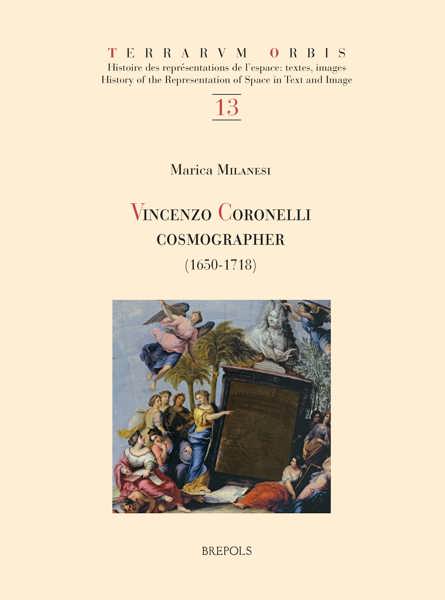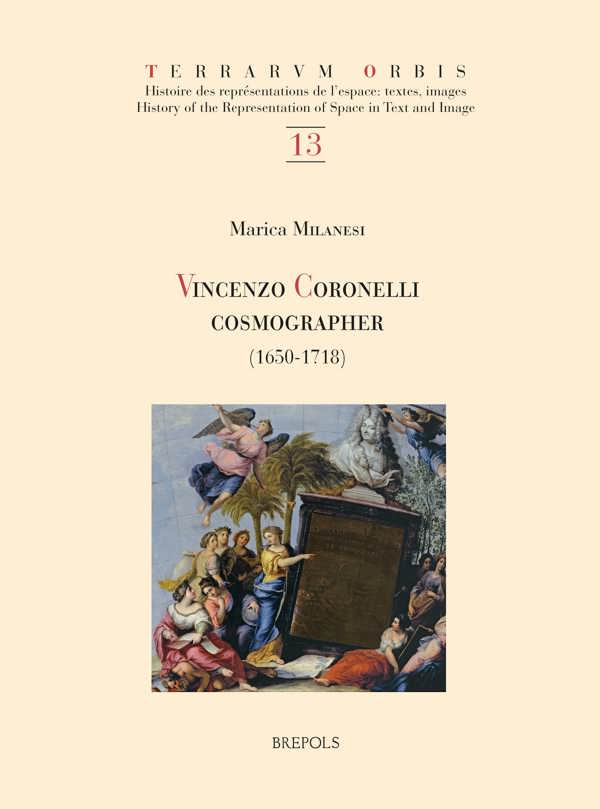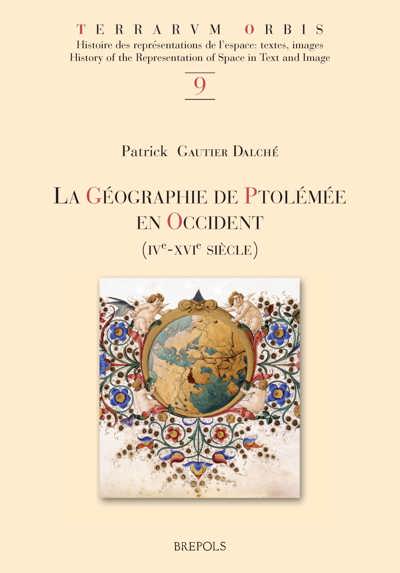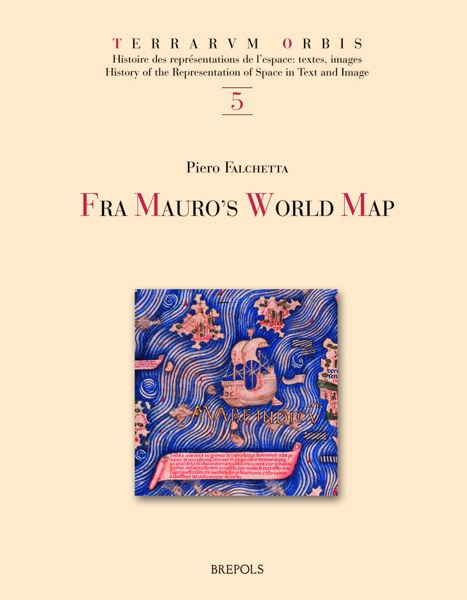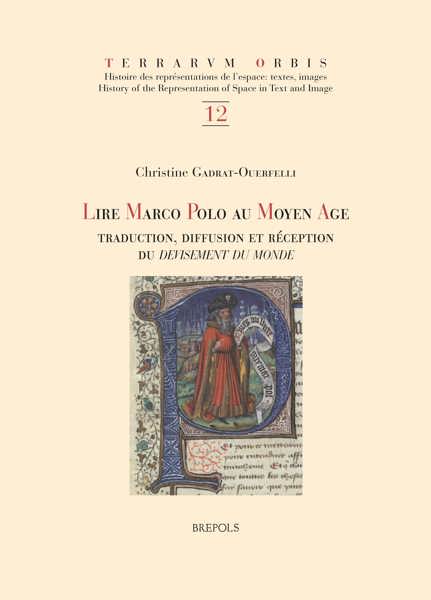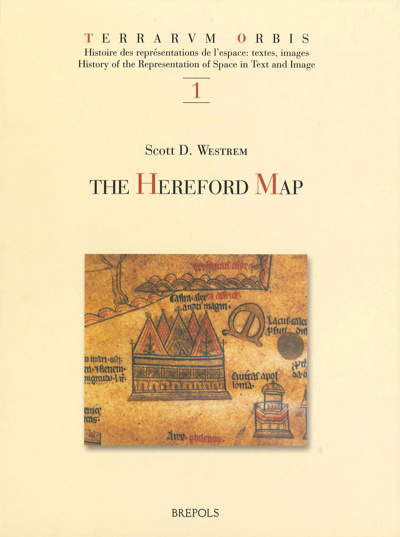
Vincenzo Coronelli Cosmographer (1650-1718)
Marica Milanesi
- Pages: 472 p.
- Size:210 x 270 mm
- Illustrations:44 col.
- Language(s):English
- Publication Year:2016
- € 150,00 EXCL. VAT RETAIL PRICE
- ISBN: 978-2-503-56461-6
- Hardback
- Available
"Beautifully edited, documented and illustrated, Marica Milanesi's historiography represents a turning point in our appreciation of Vincenzo Coronelli's life and work, hitherto based on some preconceived ideas about his more spectacular achievements. This colourful Venetian personality comes to life, with all his successes and failures, in the inspired portrayal of the social and intellectual environment that prevailed in Europe in his time." (Wulf Bodenstein, in: Maps in History, May 2017, No. 58, p. 7)
“This book is an absolute must for the reference shelves of every serious map library. It will also appeal to anyone interested in the history of globes and globe making or Father Vincenzo Coronelli specifically (...)" (Richard Pflederer, in The Portolan, 2017, p. 63)
“(…) this book is a “must” for a scholarly audience or for any cartographer or person interested in maps and globes, who wants to know more about the life and world of Vincenzo Coronelli at the end the seventeenth century. The book impressed me very much: it is informative, the extensive and detailed footnotes are very descriptive, and the plates are fascinating. Finally, the book is well structured, with an extremely useful index, so it is easy to locate information on any specific globe, map or publication by Coronelli.” (Lucia Lovison-Golob, in The Globe, 82, 2017, p. 63)
“Milanesi’s analysis of his career has opened a valuable window on European intellectual life either side of 1700, which is thoroughly explained to us in this invaluable book.” (Robert J. Mayhew, in Imago Mundi, 70/1, 2017, p. 132)
“It is appropriate that Coronelli’s achievements are described in a large and ambitious volume, the product of almost 20 years of work, an impressive scholarly study, prepared with dedication and thoroughly referenced.” (Jim Bennett, Journal for the History of Astronomy, 49/1, 2018, p. 124)
“De par l’érudition de l’auteur, l’abondante bibliographie fournie en notes de bas de page et les appendices, le livre, richement illustré et de facture soignée, est désormais sans aucun doute un travail incontournable pour toute recherche s’intéressant à la cartographie et aux cultures géographiques européennes à l’époque moderne.” (Leonardo Ariel Carrió Cataldi, dans Dix-septième siècle 2018/2, 279, p. 357)
“Die Studie besticht durch die kontextgebundene, höchst differenzierte Analyse der überlieferten Globen und Karten sowie deren Verarbeitungen in Buchform. Wertvolle Anhänge erschließen systematisch das umfangreiche Quellenmaterial, darunter Auflistungen von Coronellis Himmels- und Erdgloben, der von Jean-Baptiste Nolin in Paris publizierten Coronelli-Karten, der von 1685 bis 1687 gedruckten sowie der im Corso Geografico von 1685 bis 1697 veröffentlichten Großkarten. Der ausgewogene Band mit Handschriften- und Namensregister sowie 44 Farbtafeln fügt sich hervorragend in die Reihe ein, die, für die Kartengeschichte längst unverzichtbar, nun auch einen Meilenstein der Globenforschung hervorgebracht hat.” (Ingrid Baumgärtner, in Historischen Zeitschrift, 307/2 , 2018, p. 518)
“ (…) the sheer scale of Coronelli’s endeavours, his hobnobbing with the most powerful monarchs and talented engravers of the day, his puzzling role at the head of a missionary order which emphasised humility above all other virtues, the vexed problems of Coronelli’s sources, as previous scholars like Leonora Navari have drawn attention to, all of these questions come together and are answered in this admirable book.” (Stefan Halikowski Smith, in The European Legacy, 2020)
Marica Milanesi Grendi, now retired, was Professor of History of Geography at the Università degli studi in Pavia. Her particular interests concern the representation of space in the period from the fifteenth to the seventeenth centuries, especially amongst the humanists and scholars in Venice and Florence.
The Franciscan Vincenzo Coronelli (Venice, 1650-1718) was one of the most famous creators of globes and maps in the late seventeenth century. Neglected for much of the intervening period, his works are now highly prized on the antiquarian market. But scholars have lagged behind and studies on his cosmography remain, till now, partial, if not erroneous.
The present study offers a detailed investigation of contemporary documents and Coronelli’s own works. It throws new light on the man and his geographical and cosmographical interests, and puts this in the historical context. It also describes his astonishing career within the Church. His works are framed within the perspective of seventeenth-century knowledge of the representation of space, and places the scientific research of the period in its social milieu.
The book is divided into three parts. Each part is devoted to a particular aspect of Coronelli’s activities and sets them within the stages of his career. The first part focuses on the manufacture of two four-metre diameter globes for the Galerie des glaces at Versailles, subsequent production of these in smaller dimensions, and their marketing throughout Europe. The second part focuses on the workshop of the Frari, paying particular attention to Coronelli’s role as a salesperson of writings and drawings about the war against the Ottomans, and as an editor of maps and plans, geographical atlases, illustrated books, and finally an unsuccessful encyclopaedia. This section also examines how manufacture within this workshop was organized, its finance, and the economic relations with colleagues, competitors, and clients. The third part examines the ‘Cosmografo della Serenissima’ and describes its successes and failures, and the Accademia degli Argonauti and its links to princes and aristocrats, the Venetian republic, and the république des lettres.
An appendix is provided comprising transcripts of certain key documents discussed in the volume, and a list of maps that can be attributed to Coronelli.
